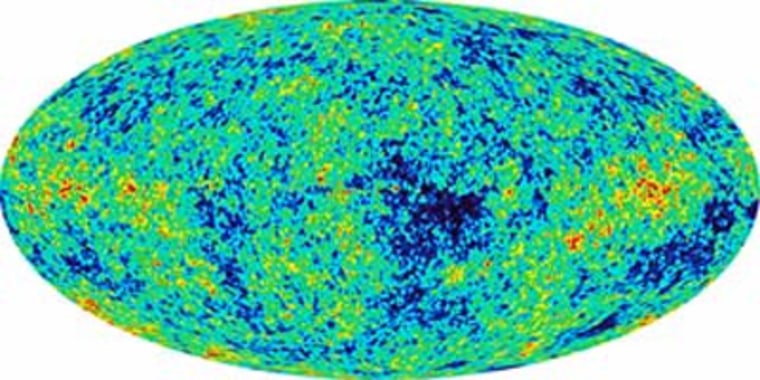A project aiming to create an easier way to measure cosmic distances has instead turned up surprising evidence that our large and ancient universe might be even bigger and older than previously thought.
If accurate, the finding would be difficult to mesh with current thinking about how the universe evolved, one scientist said.
A research team led by Alceste Bonanos at the Carnegie Institution of Washington has found that the Triangulum Galaxy, also known as M33, is about 15 percent farther away from our own Milky Way than previously calculated.
The finding, which will be detailed in an upcoming issue of Astrophysical Journal, suggests that the Hubble constant, a number that measures the expansion rate and age of the universe, is actually 15 percent smaller than other studies have found.
Currently, most astronomers agree that the value of the Hubble constant is about 71 kilometers per second per megaparsec (a megaparsec is 3.2 million light-years). If this value were smaller by 15 percent, then the universe would be older and bigger by this amount as well.
Scientists now estimate the universe to be about 13.7 billion years old (a figure that has seemed firm since 2003, based on measurements of radiation leftover from the Big Bang) and about 156 billion light-years wide.
The new finding implies that the universe is instead about 15.8 billion years old and about 180 billion light-years wide.
A new way to measure distance
The researchers reached their surprising conclusion after using a new method they invented to calculate intergalactic distances, one that they say is more precise and requires fewer steps than standard techniques.
"We wanted an independent measure of distance — a single step that will one day help with measuring dark energy and other things," said study team member Krzysztof Stanek from Ohio State University.
The new method took 10 years to develop and relied on optical and infrared measurements gathered from telescopes all around the world. The researchers looked at a binary star system in M33 where the stars eclipsed each other every five days. Unlike single stars, the masses of paired stars can be precisely calculated based on their movements. With knowledge of the stars' masses, the researchers could calculate their true luminosities, or how bright they would appear if they were nearby.
The difference between the true luminosity and the observed luminosity gives the distance between the stars and Earth. The team's results suggested that the stars were about 3 million light-years from Earth — or about half-a-million light-years farther than would be expected using the commonly accepted Hubble constant value.
'Not impossible'
Lawrence Krauss, a professor of astronomy and chair of the Department of Physics at Case Western Reserve who was not involved in the study, said the idea of a significantly reduced Hubble constant would be hard to accommodate.
"Things fit right now very well for a Hubble constant of a low 70s," Krauss said in a telephone interview. "It corresponds very well with the age of globular clusters as we've determined them and the age of the universe. It would be hard, although not impossible, to change things by 15 percent."
Stanek said his team plan to follow up their finding with distance measurements for either another binary star system in M33 or to look for a binary system in another galaxy, perhaps Andromeda.
"It's extremely important to have independent measurements of the Hubble constant," Stanek told SPACE.com. "That's what we're working towards."
